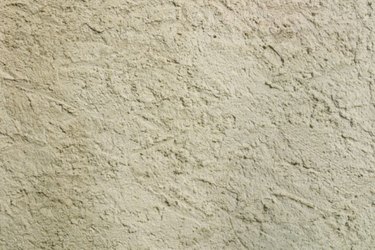
Older homes, especially, were constructed with lath and plaster interior walls, compared to the drywall often used today. The lath, which composes the base for the plaster wall, is wood. The nature of this type of construction often leads to structural issues that manifest as cracks in the plaster walls. Some of these issues can be handled by a handy homeowner while others may be serious enough to need professional repair.
Humidity Changes
Video of the Day
Although plaster is stable, the wood framing that is behind it expands with additional moisture and contracts as it loses moisture. As the level of humidity in the air, along with the temperature, climbs up and drops down from season to season, the expanding and contracting framing lumber creates stress joints on the plaster wall. The joints are flexed as the wood undergoes these seasonal moisture changes, resulting in the plaster cracks. The soil underneath the foundation may expand and contract as moisture levels change, also leading to plaster wall cracks.
Video of the Day
Structural Shifting
Plaster wall cracks that are found running from the corners of doors and windows are often the result of the house settling over a period of years. Structural weaknesses, caused by improperly spaced framing members, along with other reasons, cause these types of cracks. Other factors, such as water damage, will further accelerate these structural cracks. Likely, the house settling will continue as will the cracks in these places.
Loose Plaster
The plaster may sag in certain areas, causing cracks in those spots, which can be caused by the plaster coming loose from the base or broken nails in the lath behind the plaster. The keys, or coat, which can be seen between the lath strips behind the plaster, binds the plaster to the lath. These keys may break off. Without the inner support, the plaster will bulge and eventually crack.
Poor Workmanship
The use of inferior plastering materials in the initial building process may lead to future cracks. If the plaster is not bonded properly to the base, for example, this lack of bonding will cause cracks that go entirely through the plaster.